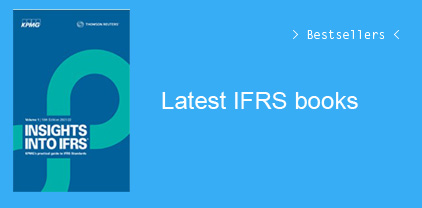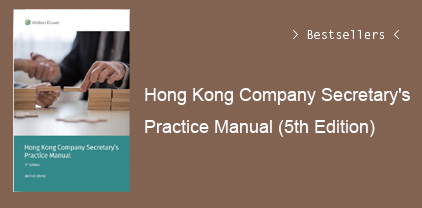INTRODUCTION 1
- Expanding Controller Value 1
- Factors Currently Influencing Controllers 1
- The Path From Controller to Business Partner 3
- First Circle—Detail-Oriented Controller 3
- Second Circle—Controller and Business Strategy 4
- Third Circle—Industry Strategy 4
- Fourth Circle—Trends, Politics, Economy 5
- Contrast Detailed Controller With Business Partner 5
- Survey of What CEOs Want From Controllers and CFOs 5
- Themes and Structure of This Book 6
1 CONTROLLER VERSUS BUSINESS MANAGER 11
- Controller vs. Business Manager 11
- The Role of Controller 11
- The Role of Business Manager 11
- Contrast Controller With Business Manager 12
- Servant Leadership 15
- Principles of Servant Leadership 16
- Managing Versus Leading 17
2 ORIGIN OF VALUE AND PLANNING CONTINUUM 23
- The Overall Planning Model 23
- Dreams 24
- The Value and Purpose of Dreams and the Relationship to Planning 25
- Vision 26
- Mission 27
- How Do You Make a Mission Statement Come Alive in an Organisation? 28
- Goals 28
- Execution 29
- Success 30
- The Planning Continuum 30
- Dreams 31
- Vision 31
- The Business Plan 31
- The Strategic Plan 31
- The Annual Plan 31
- Three- to Five-Year Plan 32
- Risk Management 32
- Vacation Metaphor for Planning 32
- Identifying the Business Model 34
- Creating Value Through Strategic Alignment 35
- Driving Value Through an Aligned Culture 43
- Clarify Performance Expectations 43
- Define Values in Behavioural Terms 45
- Hold Leaders and Staff Accountable 46
- Getting Started with Your Own Culture Transformation 46
3 CORPORATE CULTURE AND BUSINESS PLANS 49
- Corporate Culture and Planning 49
- Corporate Culture and Its Relation to Strategic Planning 54
- McKinsey Study—Strategic Planning 57
- The Business Plan 62
- Introduction 62
- The Business Plan 62
- What Are the Benefits of Using a Business Plan? 62
- Considering the Audience for a Business Plan 63
- Business Plan Outline 64
- Cover Sheet 65
- Table of Contents 65
- Executive Summary 65
- Company Description 66
- Industry Analysis 68
- Market Analysis 69
- Competition 70
- Marketing and Sales 74
- Operations 75
- Management and Organisation 76
- Capitalisation and Structure 77
- Development and Milestones 78
- Risks and Contingencies 79
- Financial Projections 79
- Appendices (Optional) 80
- Business Plan Pitfalls 80
- The Business Plan Is Only Written to Receive Funding 81
- The Business Plan Is Written by a Consultant 81
- The Business Is Unwilling to Spend the Required Time to Create the Business Plan 81
- The Business Does Not Match Its Corporate Culture With the Same Level of Business Planning 82
- The Business Operates in Crisis Mode and Therefore Ignores the Planning Process 82
- The Plan Is Not Shared With All Levels of the Organisation 82
- Lower Level Employees Had No Input Into the Business Plan 82
- The Business Does Not Recognise the Power of a Vision or a Mission Statement 82
- Employees Do Not Know How Their Positions Relate to the Business Plan 83
- The Business Has Hidden Issues That No One Is Willing to Discuss 83
- The Business Is Unwilling to Accept That Its Business Model Is Out of Date or May Be in Jeopardy 83
- Hockey Stick Projections 83
- Underestimating Competition 83
- Underestimating Start-up Expenses 84
- Overestimating Sales Volume Ramp Up 84
- Lack of Consistency in the Plan 84
- Lack of Objective Reviewer 84
- Owner of Business Plan Is Too Enthusiastic About Derivative Possibilities 84
- Market Share Estimates That Have No Support 85
- Lack of Visual Charts and Diagrams 85
- Credibility of Board of Directors 85
- Uncontrolled Spending and Start-up 85
- Failure to Review and Include Ratios and Trend Analysis 85
- The One-Page Business Plan 86
4 STRATEGIC PLANS 87
- The Difference Between a Business Plan and a Strategic Plan 87
- Benefits of Strategic Planning 87
- Basic Overview of Various Strategic Planning Models 88
- Model One—”Basic” Strategic Planning 88
- Model Two—Issue-Based (or Goal-Based) Planning 89
- Model Three—Alignment Model 89
- Model Four—Scenario Planning 90
- Model Five—”Organic” (or Self-Organising) Planning 90
- Comparison of New Planning to Old Planning 91
- Strategic Planning Resources 91
- Software Programs 92
- Web Sites 92
- Government Resources 92
- External Consultants 92
- Coaches or Facilitators 92
- How Are Departmental Goals Influenced by Strategic Goals? 93
- Tools That Are Available to Aid the Strategic Planning Process 93
- SWOT Analysis 94
- PEST Analysis 95
- Scenario Planning 96
- Competitive Analysis 97
- Goals Grid 97
- Focus Groups 98
- STP Method 98
- Gap Analysis 99
- Start and Stop 99
- Plus Delta 99
- Balanced Scorecard 100
- Force Field Analysis 101
- Product-Market Growth Matrix 103
- Mind Mapping 104
- The 5 Whys 105
- How To Conduct Strategic Planning for Your Company 106
- One-Page Strategic Plan 108
5 LEAN MANAGEMENT, BEST PRACTICES, AND TURNING DATA INTO KNOWLEDGE 113
- Introduction 113
- Lean Management 113
- Lean Manufacturing Overview and Benefits 114
- 5S 114
- Visual Controls 115
- Value Streams 115
- Pull 116
- Mistake Proofing 116
- Quick Changeover 116
- Six Sigma 117
- Theory of Constraints 117
- Lean Concepts 118
- Value Streams and Value Stream Mapping 118
- Pull Manufacturing 120
- Kanban 122
- One Piece Flow Manufacturing 123
- Standard Work and Takt Time 124
- Takt Time 124
- Production Smoothing 125
- Kaizen 126
- Waste Identification 128
- Office Lean Management 129
- Lean Office Approach 129
- Implementing a Lean Programme in Your Business 131
- Best Practice Checklist 132
- Turning Data Into Knowledge 137
- Almanac of Business and Industrial Financial Ratios 138
- Altman’s Z-Score: A Bankruptcy Predictor 144
- Z-Score Model 1 145
- Z-Score Model 2 152
- Z-Score Model 3 152
- Publicly Traded Data 153
- Finance Yahoo Comparable Data 153
- Economic Analysis—American Association of Railroads 156
- Economic Analysis—Federal Reserve Industrial Production and Capacity 159
- Economic Analysis—Federal Reserve Data 162
- Correlation Analysis 166
- Ratio Analysis 167
- Financial Ratios 167
- Liquidity Ratios 167
- Asset Turnover Ratios 168
- Financial Leverage Ratios 169
- Profitability Ratios 170
- Dividend Payout Ratio 170
- Use and Limitations of Financial Ratios 171
- DuPont Calculation 174
- Summary Comments 175
6 ETHICAL LEADERSHIP 177
- The Committee of Sponsoring Organizations (COSO) 177
- Relationship of COSO and Ethics 179
- Internal Control Principles 179
- Internal Audit 182
- Chief Ethics Officer 182
- Fraud Reporting Process 182
- Measurement 183
- Sample Code of Ethics Policy Statement 183
- Code of Ethics and Business Conduct—ABC Co. 183
- Set Metrics and Report Results Accurately 186
- AICPA Code of Professional Conduct 188
- Members in Business and Industry—Examples of Violations 188
7 EMPLOYEES 191
- What Do Employees Want? 191
- Meaning 192
- Control 193
- Reward 193
- Recognition 195
- Balance 196
- Recruit, Retain, and Develop 196
- Personality Profiles 197
- Merrill-Reid Descriptors 200
- Merrill-Reid Implications for Working with Staff 201
- Profile Tools 202
- Myers-Briggs Profile 202
- The Caliper Profile 208
- Culture Index 210
- Performance Values Matrix 214
8 OVERSIGHT OF HUMAN RESOURCES AND INFORMATION TECHNOLOGY 217
- The Finance Function and Oversight of the Human Resources Function 217
- Trends in Strategic Human Resource Management 218
- Overview of Human Resource Management 219
- Mission Statement 219
- Environment and Trends 220
- Strategy 221
- Evaluation 221
- Leveraging Lean Understanding in the HR Function 224
- Outsourcing the HR Function 226
- How To Manage the IT Function Successfully 227
- Additional IT Duties for the Controller 229
- Creating an IT Strategic Plan 230
- IT Strategic Plan Principles 231
- Information Technology Strategic Plan Outline 231
- IT Benchmarking 239
- Opportunities To Develop Efficiencies Within an IT Department 241
- Lean IT Service Management 241
- Staffing the IT Positions and Outsourcing 242
- Staffing 242
- Outsourcing 243
9 PROJECT AND CHANGE MANAGEMENT 247
- Overview 247
- Principles of Change Management 248
- Assessing Person and Business Readiness To Change 250
- Phases of Change 251
- Why People Resist Change 252
- How To Communicate Change 254
- Words We Use 255
- Change Management for Teams and Projects 256
- The Role of Top Management 257
- Danger Signs That the Change Process Is Failing 258
- Role of Attitudes, Thoughts, Feelings and Beliefs 259
- Conclusion: Two Checklists for Managing Change in Business 260
- CHANGE Approach Checklist 260
- Prosci Change Management Planning Checklist 261
10 COMMUNICATION AND PRESENTATION SKILLS 263
- Communication Skills 263
- Failure to Communicate 263
- Purpose of Communication 264
- Types of Communication 265
- Improving Communication Skills 266
- Listening 266
- Speaking 267
- Background of Other Party 268
- Pitfalls in Communication 268
- Understanding NLP 269
- Uses of NLP 270
- Three Main Learning Styles 271
- Utilising NLP 271
- Eye Accessing Cues 271
- Body Language—Understanding the Unspoken 272
- Improving Presentation Techniques 274
- Financial Presentations Made Easy 274
- Improving PowerPoint Skills 276
- Managing Your Boss 277
11 SUMMARY 281
- Introduction—Expanding Controller Value 281
- Chapter 1—Controller vs. Business Manager 281
- Chapter 2—Origin of Value and the Planning Continuum 282
- Chapters 3 and 4—Corporate Culture, Business and Strategic Plans 282
- Chapter 5—Lean, Best Practices, Data Into Knowledge 283
- Chapter 6—Ethical Leadership 283
- Chapter 7—Employees 283
- Chapter 8—HR and IT Functions 284
- Chapter 9—Project and Change Management 284
- Chapter 10—Communication Skills 284
APPENDIX A 287
APPENDIX B 293
APPENDIX C 309
APPENDIX D 287





































